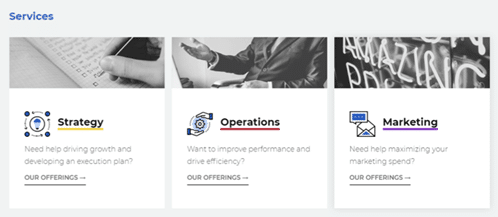By Amanda Utz
Oftentimes, individuals across organizations have their own opinions on how best to tell the story of a product or service. They use these opinions to influence how they feel the message should be conveyed. Sales teams say, “We are the closest to the customer and the competition – this is how we convey our message” while marketers state “but we are the experts!” Frequently, the sales team is telling one story, the web team is sharing a different message, the CRM team has their own version and the operations team is in damage control saying whatever they can to keep the confused customers happy. This all leads to complex and complicated messaging that lacks the keys to a unified messaging story.
Knowing this, I encourage marketers to ask these questions: Are you confident in how your company communicates your products/services? Are you providing a simplified message to get your point across? Do you use visuals to help convey your story? Are you telling a consistent story across channels – both internally and externally?
Typically, companies only have a few seconds to initially capture a buyer’s attention about a product or service – regardless of the marketing channel. You need to optimize this short time by making it as easy as possible for your customers to quickly decipher what those products and services are and why they should consider them. This methodology also benefits your employees – allowing them to easily convey these same products and services and why customers should consider them.
When it comes to messaging, think simplistic, visual and consistent.
Simplistic: Keep it super simple. I’ve seen companies write dissertations about a simple service offering – nobody has time for that! Use single words or short phrases to describe each of your service offerings or products, making a strong, concise and memorable impression at a glance. As an example, instead of saying “our extensive offerings will help round out your supply chain and address complex supply chain issues,” simply call out what those extensive offerings are and then elaborate in short bullet points under each offer how they address those issues. Make it super simple – offerings are: Transportation, Warehousing, Technology. Not only does this benefit the customer, it makes it easier for your employees to convey the story of those products and services.
Visual: Draw visual connections. I am a huge proponent of the use of icons and color schemes that align with the key services or products offered as it helps organize your story. It provides a visual connection to the product or service that is being showcased. With every piece of marketing collateral, bring in those unassuming visual elements to live alongside the super simple messaging. By pairing the visual with the simplistic message, you offer an engaging and easy-to-understand story. You are subtly training the customers to associate those visual cues with the product or service. See example below:
Consistent: Consistency is key (and king!). Once you employ simplistic language and corresponding visual cues, be consistent in the use of both of these! From your website to email communications, sales tools and social media channels, ensure your customers have a consistent experience when learning about your products or services. All channels and employees (sales, operations, etc.) should be singing the same lines to the same tune. As a quick exercise, scan through the product or service section of your website, a few customer emails and any printed material/sales collateral that is customer-facing. Are you consistent in the order in which you present your products or services (e.g. always lead with flooring, followed by cabinets and then countertops)? Are you using the same simple copy to describe each? Are you consistent with the treatment of the visuals when used? You may be surprised at what you uncover.
In closing, make things as easy as possible for your customers when conveying information about your products and services – offer a simple message with visual cues consistently across all channels (both internally and externally). If your employees are having a difficult time telling your story, chances are your customers are having an even harder time deciphering your story. Keep it simplistic, visual and consistent!
About the Author
Amanda has nearly twenty years of experience driving change for senior executives at start-ups, private equity-owned businesses and Fortune 500 companies. She has served in senior marketing and strategy roles at The Home Depot, Mannington Mills, The Impact Partnership and most recently Veritiv, an $8B distributor of industrial products. She recently made the decision to leave Corporate American and go into business with her sister as Partner of Avant Strategy, a consulting firm that provides strategy, operations, marketing, finance and M&A consulting services to both privately held and public companies of all sizes. Amanda can be reached here.


